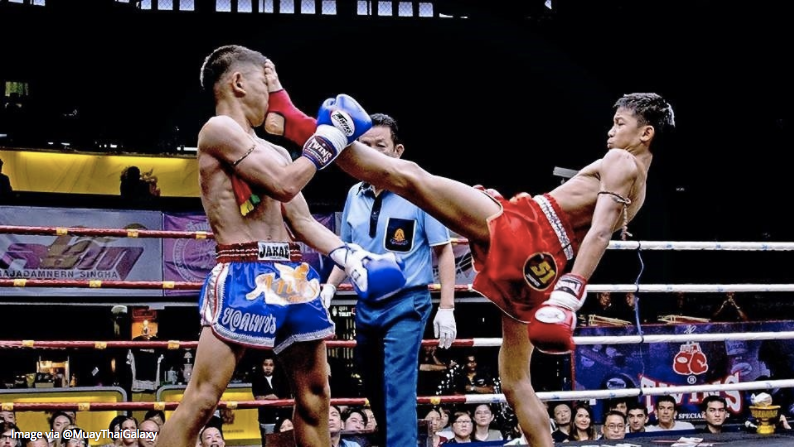Weight classes in professional Muay Thai are categorized similarly across different sanctions and promotions with slight differences.
Broadly speaking, 108 to 126 lbs (49-57kg) tend to be the most competitive weight classes in Thailand as this is where the majority of Thai fighters compete. Outside of Thailand, welterweight and middleweight classes between 143 to 160 lbs (65-72kg) are where the top Muay Thai action takes place. Many consider these to be the most exciting weight classes with the best balance of power, skill and experience.
Here’s a look at the Muay Thai weight classes at most Thai stadiums:
Mini Flyweight weight over 100 lbs but not exceeding 105 lbs. (47.629 kg.)
Junior Flyweight weight over 105 lbs but not exceeding 108 lbs. (48.990 kg.)
Flyweight weight over 108 lbs but not exceeding 112 lbs. (50.805 kg.)
Junior Bantamweight weight over 112 lbs but not exceeding 115 lbs. (52.166 kg.)
Bantamweight weight over 115 lbs but not exceeding 118 lbs. (53.526 kg.)
Junior Featherweight weight over 118 lbs but not exceeding 122 lbs. (55.341 kg.)
Featherweight weight over 122 lbs but not exceeding 126 lbs. (57.155 kg.)
Junior Lightweight weight over 126 lbs but not exceeding 130 lbs. 58.971 kg.)
Lightweight weight over 130 lbs but not exceeding 135 lbs. (61.238 kg.)
Junior welterweight weight over 135 lbs but not exceeding 140 lbs. (63.506 kg.)
Welterweight weight over 140 lbs but not exceeding 147 lbs. (66.681 kg.)
Junior Middleweight weight over 147 lbs but not exceeding 156 lbs. (70.764 kg.)
Middleweight weight over 156 lbs but not exceeding 160 lbs. (72.578 kg.)
Junior Heavyweight weight over 160 lbs but not exceeding 175 lbs. (72.578 kg.)
Heavyweight weight exceeding 175 lbs (79.383 kg.) and upwards.
Fighters now undergo weight cuts leading up to their fights in order to meet weight during weigh-ins (usually a day before fight night) and compete at their most efficient weight. Weight cuts can sometimes be drastic but have become accepted as part of competing in almost all combat sports.
The most common weight cut method involves reducing water weight. Fighters not only cut down on food intake (especially carbs) during weight cut, but also attempt to reduce water weight. This is achieved through limiting water intake, cutting down sodium in diet and running in sauna suits. Training intensity is lower during this period due to the lower energy of the fighters. In some cases, fighters also go to saunas, especially on the day of weigh-in.
Weight cuts allow fighters to meet the weight requirements which are usually much lower than their usual walk-around weights. After weigh-ins, competitors are allowed and will attempt to rehydrate and recover as much weight as possible before their fights. This needs to be managed as after a week of weight cut, overeating may lead to nausea or indigestion. Experienced fighters are able to adapt and manage weight cuts and recovery more efficiently to perform at their best.
Source: eu.yokkao.com



